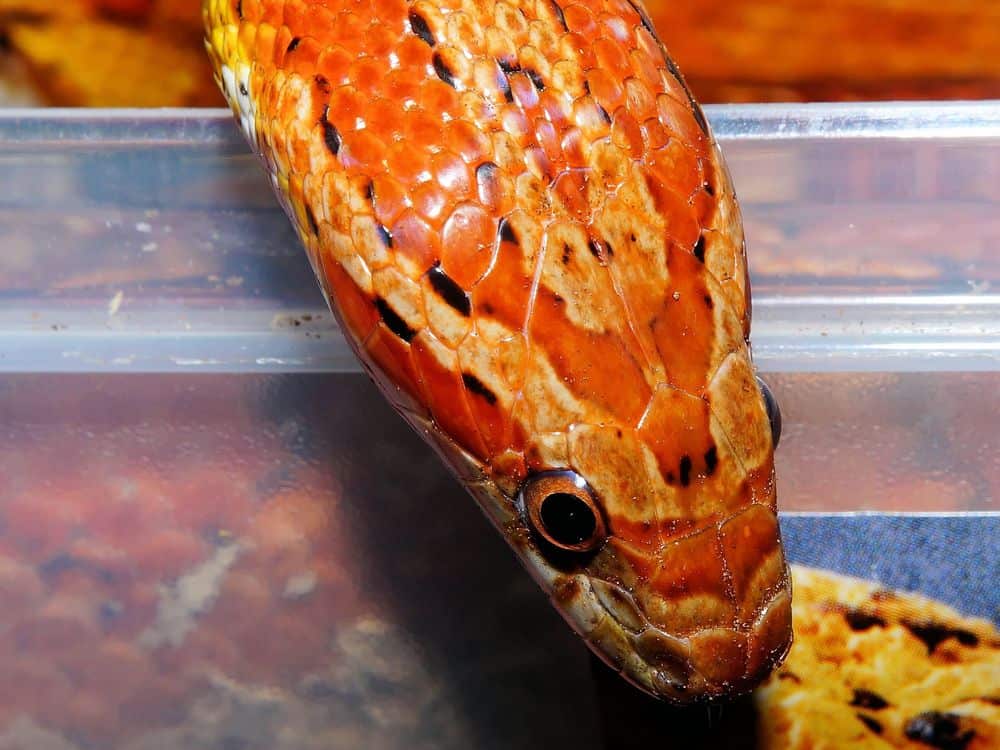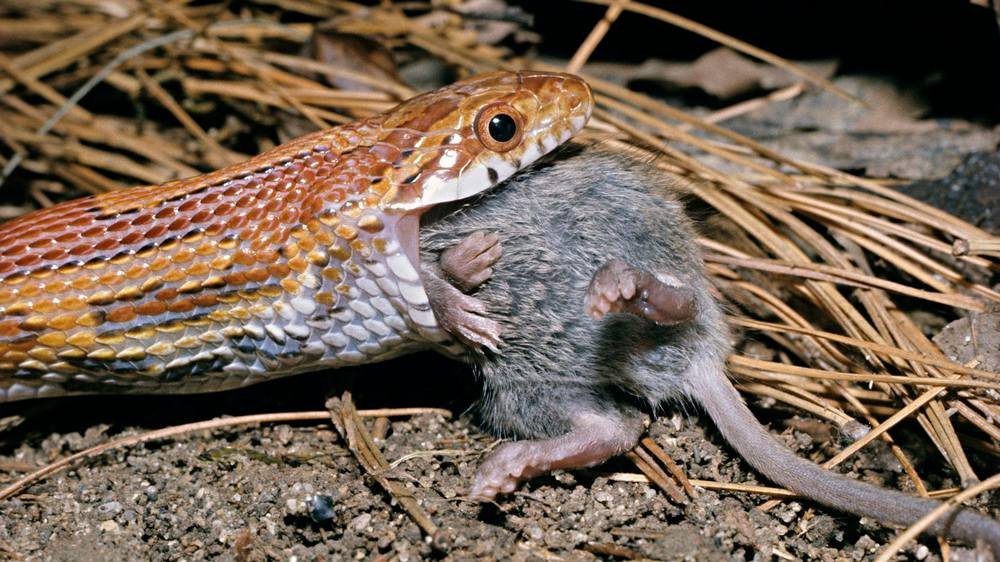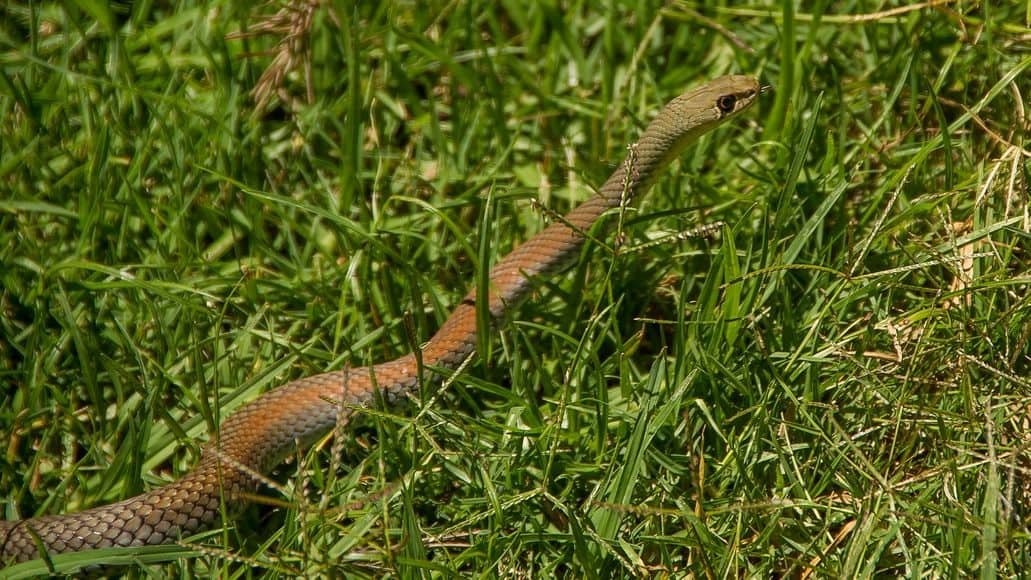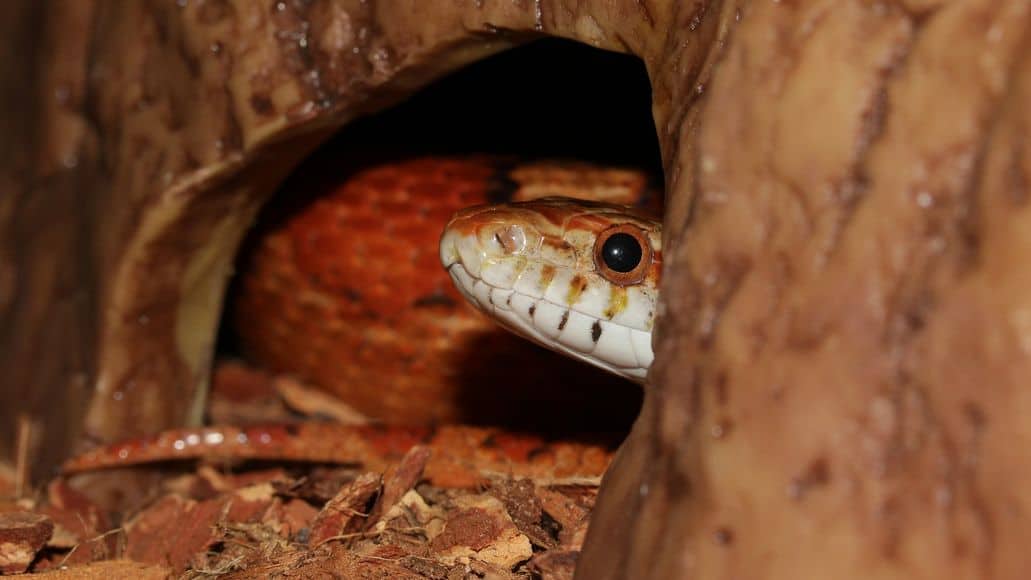
Even if no one in your household would panic over an escaped snake, you still have a pet that is in danger.
It could easily get injured or disappear for good.
That’s why you need to know how to find a lost snake.
And ideally, you want to know this before your snake escapes, not have to look it up in a panic after the fact.
So keep reading to learn exactly what steps to take to recover your escaped snake. We will also look at why snakes try to escape and give you some tips on how to prevent escapes from happening in the first place.
Table of Contents
- 1 How To Find A Lost Snake In The House
- 1.1 Step 1: Secure The Room
- 1.2 Step 2: Search Near The Enclosure
- 1.3 Step 3: Branch Out And Search All Other Rooms
- 1.4 Step 4: Be Methodical In Your Search
- 1.5 Step 5: Use Some Heat Sources To Attract Your Snake
- 1.6 Step 6: Continue The Search At Night By Using Bait
- 1.7 Step 7: Set Traps
- 1.8 Step 8: Check Cameras Or Use Motion Activators
- 2 Why Is My Snake Escaping Its Enclosure?
- 3 Do Snakes Escape Easily?
- 4 How To Make A Snake Enclosure Escape-Proof
- 5 Snake Escaped From Cage: Final Thoughts
How To Find A Lost Snake In The House
If your snake has escaped from its cage, you should search for it immediately. Begin by searching near its enclosure. Chances are that it hasn’t gone far.
Make sure your cat or dog is secured in another room. While they may aid the search, they could frighten your snake. You should also lock all doors and windows in the room where the snake was housed to prevent it from going outside.

Let’s take a look at all the steps to go through when you have a snake that has escaped from its enclosure.
Step 1: Secure The Room
To minimize the risk of your snake going outside your house or to other rooms, please close all doors and windows and seal all possible escape outlets from the room where the snake was caged.
Step 2: Search Near The Enclosure
Begin searching for your snake near its enclosure. There is a good chance it might not have gone far. Search under the couch, pull out the beddings and pillowcases, shake out throws, rugs, bedspreads, etc.
Look under the furniture and inside vents and outlets. Try to check each and every nook and cranny in the room. Don’t forget to look under all of the objects and items near the snake’s enclosure.
Step 3: Branch Out And Search All Other Rooms

If you still haven’t found your snake after searching for it in the room where it was housed, lock that room and move on to the next room. If your snake is tiny, wedge some towels or blankets in the gaps of the door of each searched room. This will prevent your snake from going back into that room.
Step 4: Be Methodical In Your Search
The longer your snake has gone missing, the farther it might go. So be methodical while you search all the rooms. Always start with the adjacent rooms first and then move further away.
Be as silent as possible when you search. The more noise you make, the more scared your snake will be. This might prompt it to go into hiding or to keep moving further away from you.
Step 5: Use Some Heat Sources To Attract Your Snake
If it is winter, add some heating pads, blankets, etc. to entice your snake to come near them. Snakes cannot regulate their body temperature and tend to seek warmth from heating sources. If it is summer or your house is too warm, use air conditioning to lower the temperature. Then set up some heat sources to attract your snake.
Step 6: Continue The Search At Night By Using Bait

Snakes are ambush predators and they often wait until it is dark to get active and hunt for prey. If you have been unable to locate your snake during the day, you may have more luck at night.
If needed, use some live bait (such as mice) or some tasty frozen food (thawed, of course) to lure your snake to come out. Use flashlights while turning off all other light sources.
Step 7: Set Traps
You can place some paper or aluminum foil around the house so you can hear your snake slither on it. If possible, use sticky tape with the sticky side up to trap the lost snake. You can also try sprinkling some flour around the snake’s enclosure so its tracks become visible.
Step 8: Check Cameras Or Use Motion Activators
If you have cameras installed around your home, check them to see if they give you a clue about your snake’s whereabouts. This can be tedious, because you might have to go through hours of recorded footage. As an extreme step, you can consider motion-activated sensors so they are set off when your snake comes near them.
Why Is My Snake Escaping Its Enclosure?
Snakes can have very different motivations for escaping their enclosures. Mostly, the snakes may be unhappy and uncomfortable in their cage or they may want to hunt or search for a mate. Here are some of the main reasons a snake might try to escape its cage.
Inappropriate Environment

Snakes are sensitive to temperature and humidity changes. Since they are cold-blooded, they cannot self-regulate their body temperatures.
As a result, they need basking areas or some heat source to stay warm. If the enclosure does not have a basking area, your snake might try to seek one by escaping.
Similarly, if the environment is too humid or too dry, your snake might try to find a more comfortable spot outside the enclosure. Snakes may even try to escape if the cage is too small or cramped for them.
Lack Of Hiding Areas
Snakes are rather shy creatures. They prefer hiding if they are stressed or if they feel threatened. If the enclosure does not have adequate hiding areas, then your stressed snake might try to find one outside its cage.
To Search For A Mate
Snakes can sense potential mates through the pheromones secreted by them. If your snake senses a mate in its vicinity, it might try to escape the cage to search for it. This behavior is more common in certain snake species.
To Search For Prey

A hungry snake might try to escape its enclosure in search of food. Most snakes eat once every few weeks, but some juvenile or younger snakes may need more meals per week. If the diet you provide your snake is lacking, it might try to hunt for its own food.
Health Issues
An unwell or injured snake might also try to escape from its cage. If you see any obvious or external signs of injury, or if your snake appears ill and hasn’t been eating for a while, please see your vet right away.
Stress
Stress in reptiles can also trigger escaping behavior. If the snake’s enclosure is located in an area with loud noises, vibrations, bright lights, or other stressors, it might try to escape to avoid these things.
Do Snakes Escape Easily?

Yes, some arboreal species of snakes are quite the escape artists. They are good at climbing and can easily scale the objects or walls of their enclosure to escape. Some smaller snakes can easily find openings in their enclosures and slip outside.
Some snakes are smart enough to push the lid of their enclosures open and slip out. This is why you must secure your snake’s enclosure using a tight-fitting lid. You must also be mindful of your pet snake’s needs to curb its desire to escape, and create an escape-proof environment for it.
How To Make A Snake Enclosure Escape-Proof
If you are having issues with your pet snake escaping its terrarium, follow these tips to make the enclosure escape proof.
Choose The Right Enclosure
Select a terrarium or enclosure suitable for your snake. Make sure it is spacious enough for your snake’s size. Ensure that it has a secure locking mechanism and a tight lid to deter escapes.
If possible reinforce all the exits of the enclosure through the use of locks, clips, zip ties, etc. If the tank has a lid, consider adding some weight over it so your snake cannot push it open. At the same time, ensure adequate ventilation so your snake does not suffocate.
Provide Optimum Environment

Make sure your snake’s enclosure has the right temperature, humidity, ventilation, etc. Provide plenty of basking areas and heating pads if you live in a cold region. Make sure the snake has adequate nesting or hiding areas to minimize stress and the desire to escape.
Conduct Regular Inspections
Always conduct inspections of the enclosure and watch out for signs of wear and tear, loose panels or lids, etc. If you notice these signs, please fix them immediately. If the enclosure is worn out, consider replacing it entirely.
Snake Escaped From Cage: Final Thoughts
Snakes are good at getting out of their enclosures. Some species are downright escape artists! What that means for you as a snake owner is that you are likely to discover at some point that your snake escaped from the cage.
You can reduce, or even eliminate, the risk of that happening my ensuring your snake has everything it needs and by escape-proofing the enclosure. But just in case, it is also a good idea to know how to find a lost snake in the house. After reading this article, you should now know how to do all three of those things.
Leave a Reply